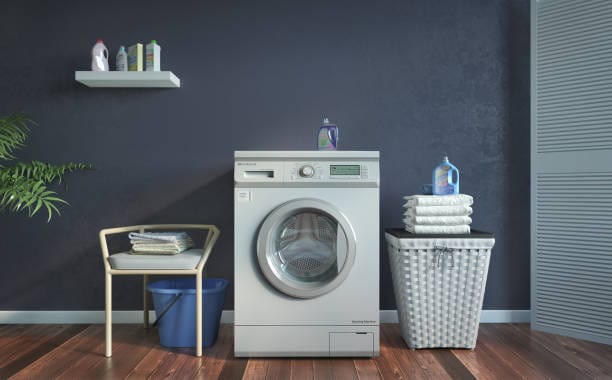Table of Contents
The Ultimate Washing Machine Buying Guide (2025 Edition)
Buying the right washing machine can save time, electricity, and your clothes! This step-by-step guide covers every factor you need to consider — from capacity and build to brands and must-have features.

1. Type of Washing Machine
a. Semi-Automatic
- Two tubs: wash + spin
- Manual water filling, manual transfer between tubs
- ✅ Low cost, but requires more effort
b. Fully Automatic Top Load
- One tub, automatic water filling and washing
- Easy to use, affordable
- ✅ Recommended for budget-conscious households
c. Fully Automatic Front Load
- Best wash quality, gentlest on clothes
- Energy & water-efficient, modern features
- ✅ Recommended for quality wash, delicates, and premium homes
2. Washing Machine Capacity
| Family Size | Ideal Load Size |
|---|---|
| 1–2 members | 6–6.5 kg |
| 3–4 members | 7–8 kg |
| 5+ members | 8.5–10+ kg |
✅ Recommended: Minimum 7 kg for 3–4 people; 8 kg+ for families with heavy laundry like bedsheets, blankets.
3. RPM (Revolutions Per Minute)
- Indicates spin speed
- 600–800 RPM: Semi-automatic
- 1000–1400 RPM: Front-load and high-end top-load
✅ Recommended: 1000+ RPM for faster drying and cleaner spin
4. Wash Quality & Fabric Safety
- Front-load = better wash, lower damage
- Drum Design: Diamond drum (Samsung), VarioDrum (Bosch), Crescent Moon (IFB)
- Anti-tangle features: Keeps clothes from knotting
✅ Recommended: Front-load or inverter top-load for gentler wash
5. Water Consumption
- Semi-auto: High
- Top-load: Moderate
- Front-load: Low (uses ~50% less water)
✅ Recommended: Front-load for areas with limited water supply
6. Must-Have Features
- Heater/Hot Water Wash: Removes oil, allergens, tough stains
- Steam Wash: Kills germs, reduces wrinkles (Bosch, LG Steam+)
- Inverter Motor: Energy-efficient, low noise
- Child Lock, Auto Restart, Delay Timer: Smart safety & convenience
✅ Recommended: Steam, inverter, heater for premium hygiene
7. What You Can & Cannot Wash
- ✅ Heavy Blankets: In machines with 8kg+ capacity
- ❌ Silk Sarees: Hand wash or dry clean only
- ❌ Shoes, large rugs: Avoid unless machine permits
✅ Recommended: Use laundry bags for delicates
8. Maintenance & Descaling
- Use descaling powder monthly (IFB, Bosch, LG brands available)
- Wipe drum and gasket weekly
- Clean lint filter and detergent tray
- Leave door open after wash to prevent mold
✅ Recommended: Monthly maintenance = Longer machine life
9. Smart Technologies & Future Trends
- AI DD (Direct Drive): Detects fabric type and adjusts motion (LG)
- i-DOS Auto Detergent: Bosch/Siemens auto-dispense detergent
- Wi-Fi Control: Monitor cycles from app (Samsung SmartThings, LG ThinQ)
- Eco Bubble / O2 Wash: Penetrates deep stains with bubbles
✅ Recommended: Future-ready models with app control and smart load detection
10. Warranty & Service
- Standard: 2 years machine, 10 years motor
- Extended Plans: From Croma, Amazon, Flipkart
✅ Recommended: Choose brands with good service networks and genuine spares (LG, IFB, Bosch)
11. Top Washing Machine Brands in India
- LG: Steam, AI Direct Drive, excellent service
- Bosch/Siemens: German build, i-DOS, quiet operation
- IFB: Built for Indian conditions, hard water filter
- Samsung: EcoBubble, SmartThings app
- Whirlpool: 6th Sense tech, budget-friendly
- Panasonic/Haier: Good for mid-range budget buyers
✅ Recommended: LG & Bosch for premium; Whirlpool & Samsung for value
Pro Tips:
- Don’t overload machine — shortens motor life
- Always use proper detergent (front-load or top-load specific)
- Run a tub clean cycle every 15–20 days
Helpful Outbound Links:
